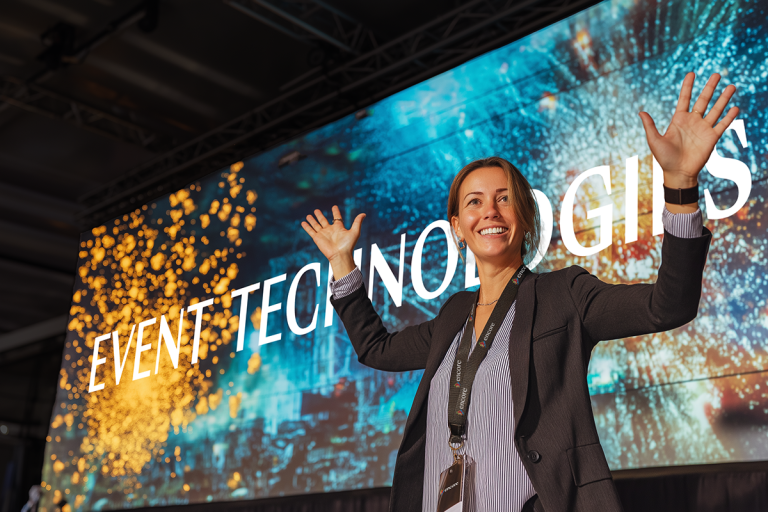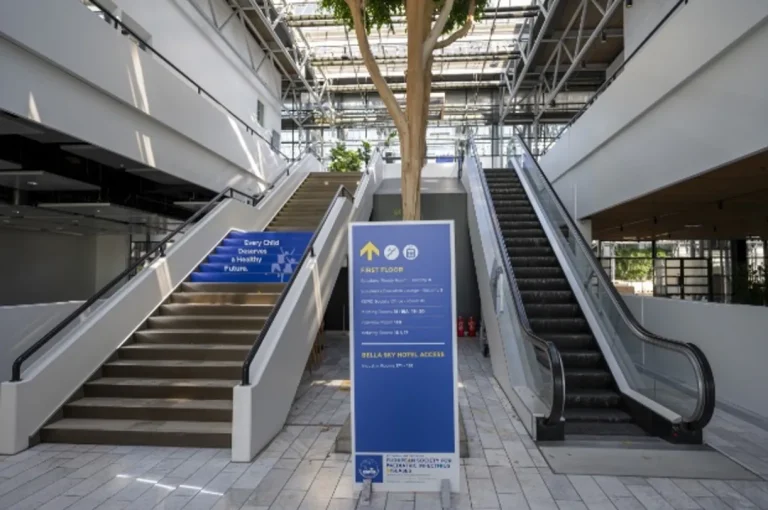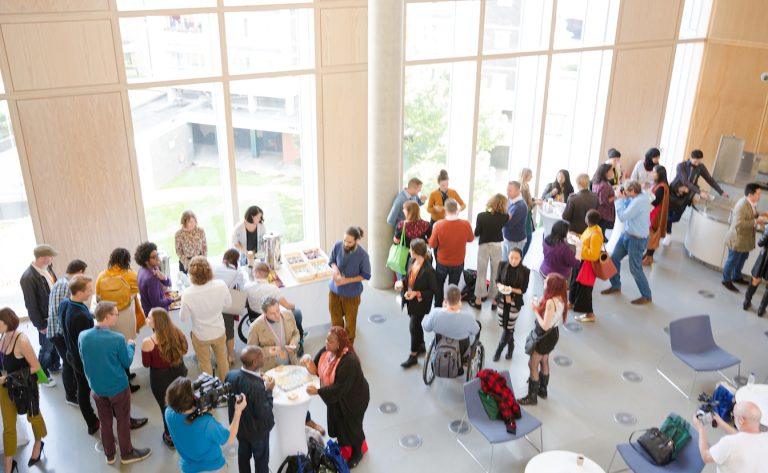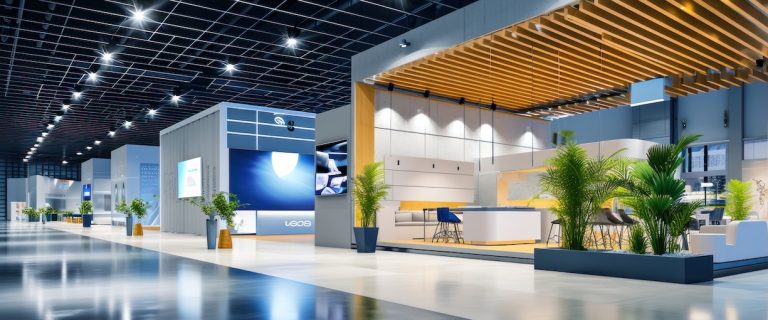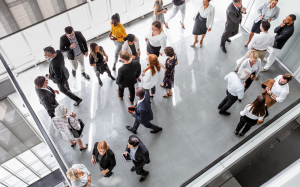 Accessibility has always been central to our industry’s purpose: bringing people together across physical, digital, and cultural barriers. But the next frontier asks us to go deeper. As our world changes, it’s no longer only about who can enter — it’s about how people feel and function once inside. Safety, energy, and connection now shape whether participants engage fully or quietly withdraw.
Accessibility has always been central to our industry’s purpose: bringing people together across physical, digital, and cultural barriers. But the next frontier asks us to go deeper. As our world changes, it’s no longer only about who can enter — it’s about how people feel and function once inside. Safety, energy, and connection now shape whether participants engage fully or quietly withdraw.
And in an era defined by AI acceleration, rising loneliness, and widespread social disconnection, the human needs beneath accessibility are evolving faster than our design standards. The next decade won’t be shaped only by what we build — but by how well humans can sustain clarity, connection, and creativity within it.
This is where neuroinclusion becomes essential — extending universal design to the cognitive and sensory level and aligning environments with how different brains and nervous systems process the world. Designing from the edges reduces friction at the margins and elevates the experience for all.
The Hidden Layer of Access
Across in-person workshops and LinkedIn polls I’ve conducted recently, 93% of event professionals reported masking — suppressing parts of who they are to meet expectations. While qualitative and based on voluntary participation, the consistency validates what many have felt but haven’t named: masking is widespread and costly.
When safety becomes performance, burnout follows. Behind every seamless production are teams facing 12-hour days, rapid-fire decisions, and constant emotional labor. When systems overload, creativity, empathy, openness, and trust all decline. Curiosity disappears — and with it, the conditions for innovation.
If inclusion is about belonging, then belonging must include the people behind the scenes. Depleted teams design on autopilot, missing the nuanced needs that turn events into genuine connection. Human capacity is now the foundation for real connection.

The Five Domains: A Complete System for Human Capacity
Across two decades in global corporate events, I masked too — even while pressure-testing accessibility on Gartner Conferences’ A&I task force. That experience, alongside insights from raising a twice-exceptional child, revealed a core truth: systems can be misaligned, not people. Once I created aligned conditions, my neurodivergent strengths unlocked. Over 1.5 years, I synthesized what I learned into five domains that shape human capacity. Together, they form the Human OS™ framework:
Wiring – How brains process sensory and emotional information. Professionals who don’t recognize their own thresholds design for imagined “average” attendees—overstimulating some, under-engaging others. Honoring diverse wiring creates genuine sensory options.
Regulation – Nervous system capacity to stay present under pressure. Chronically stressed professionals design rushed agendas without recovery—but attendees in fight-or-flight can’t learn or connect. Regulated teams design recovery into events and support attendee resilience.
Energy – Biological rhythms that sustain focus and presence. Events shaped by adrenaline exhaust teams and participants; well-paced events restore energy.
Processing – How we absorb information without cognitive overload. Overwhelmed planners unintentionally create overwhelmed attendees—solutions include clear signage, concise content, and pacing.
Belonging – Psychological safety enabling authenticity. When masking dominates, belonging becomes performative. Authenticity among planners leads to authentic and creative experiences for all.
These domains are interdependent; misalignment in one stresses the others, accelerating burnout and limiting innovation.
Because these domains ultimately converge in the nervous system, they become the blueprint for how we design experiences that support real human capacity.
NeuroDesign™: A New Logic for Human-Centered Events
The business case for inclusion is established — broader reach, stronger loyalty, deeper engagement. But the next phase requires a design logic that starts with the human nervous system.
This is the thinking behind NeuroDesign™ — an applied methodology grounded in the Human OS™. Instead of focusing only on what we deliver, NeuroDesign centers how people experience it: how they process sensory input, sustain energy, recover between stimuli, and connect authentically.
The goal shifts from access to capacity — asking not just, “Can people participate?” but “Do they have the clarity, safety, and energy to thrive?”
Regulated humans create regulated experiences. When event professionals operate from capacity rather than depletion, they instinctively design environments where attendees don’t have to mask. That’s the invisible link between team thriving and attendee thriving.
Measuring What Actually Matters
To understand whether this approach works, we need different metrics. ROI tells us what succeeded — not why. What if we also measured Return on (Nervous System) Regulation: the degree to which environments support calm, clarity, and connection?
With pioneering partners, I’m exploring ways to assess nervous system balance across the five domains: Did the environment respect sensory wiring? Did people stay regulated under pressure? Did energy sustain or deplete? Was cognitive load manageable? Did individuals feel authentic belonging?
Human capacity is multi-dimensional and difficult to quantify through conventional KPIs — which is why we need intuitive, human-centered frameworks to guide how we measure success.

Ultimately, accessibility isn’t about compliance or accommodation — it’s about creativity, empathy, and innovation. When we design events that honor the full diversity of human wiring, we elevate the entire experience: deeper learning, authentic connection, sustainable energy.
If AI is the operating system for technology, neuroinclusion is the operating system for humanity.
The future of accessibility isn’t about doing more — it’s about designing better. And when we design for human capacity, we create the conditions where curiosity, creativity, and connection naturally flourish.
That’s the blueprint for the future of human connection.

NeuroSpark+ | Neuroinclusion & Human Capacity
Founder
Yush Sztalkoper, CMP, is the founder of NeuroSpark+, helping the events industry design for human sustainability through neuroinclusion and systems transformation. With almost two decades designing global corporate events at UBS, JPMorgan, and Gartner, she now pioneers neuroinclusion frameworks for the AI era—using the events industry as a laboratory for capacity-first approaches that reshape how we create human connection at scale.
Yush created The Human OS™, Root Reflection™ diagnostic, SHIFT Pathway™, and NeuroDesign™ methodology—a complete system that scales from individuals to entire industries, moving all from surviving to thriving.

